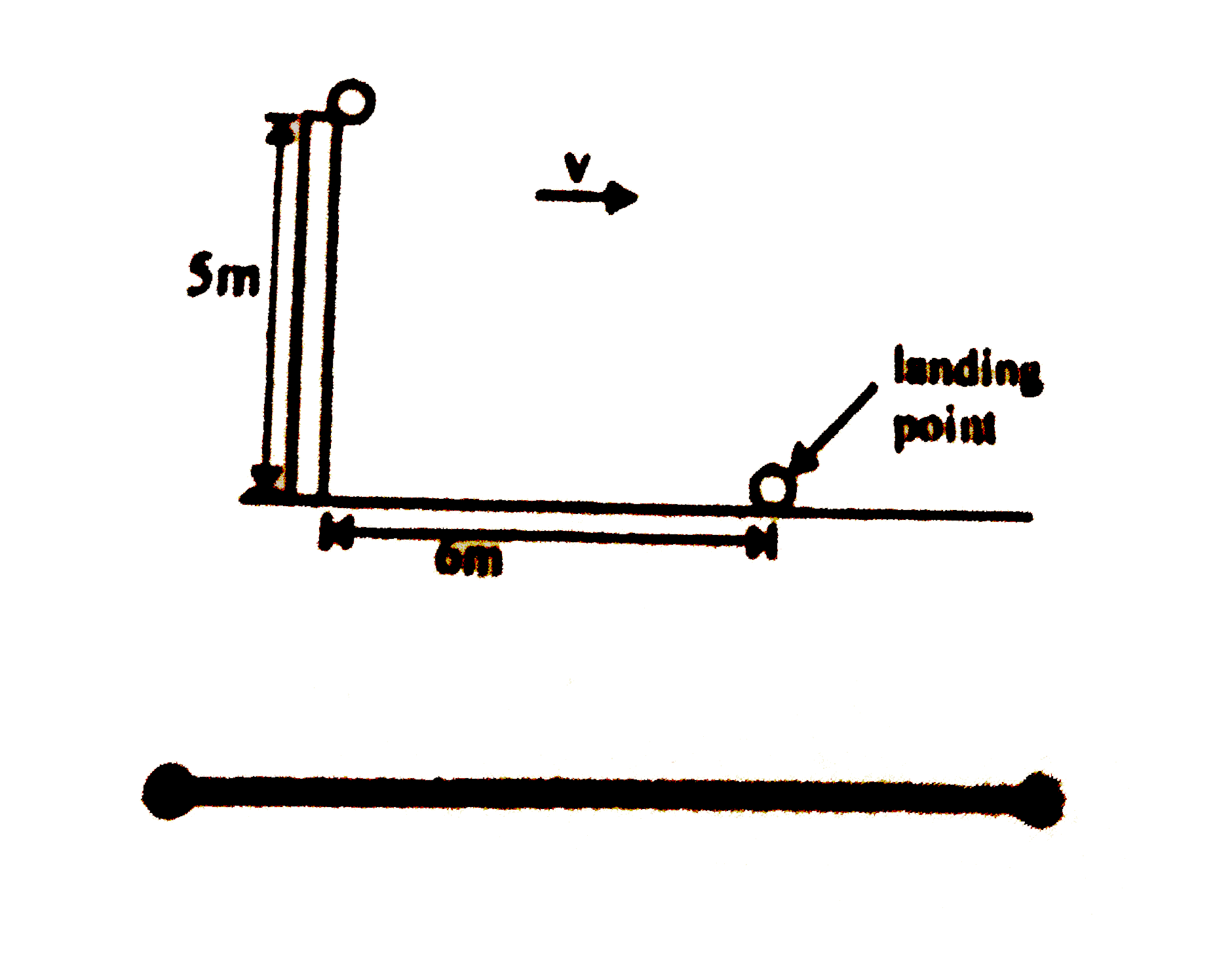An object falling from rest in air is subject not only to the gravitational force but also to air resistance. Assume that the air resistance is proportional to the velocity with constant of proportionality as k>0 , and acts in a direction opposite to motion (g=9.8ms2). Then velocity cannot exceed.
Step by step video & image solution for An object falling from rest in air is subject not only to the gravitational force but also to air resistance. Assume that the air resistance is proportional to the velocity with constant of proportionality as k >0 , and acts in a direction opposite to motion (g=9. 8 m/(s^2))dot Then velocity cannot exceed. by Maths experts to help you in doubts & scoring excellent marks in Class 12 exams.
Similar Practice Problems
- Question 1 - Select One
A stone is projected with speed 20m/s at angle 37∘ with the horizontal and it hits the ground with speed 12m/s due to air resistance. Assume the effect of air resistance to reduce only horizontal component of velocity. Then the time of flight will be-
Agreater than 2.4secBless than 2.4secC2.4secDdepends on other data - Question 1 - Select One or More
A ball is thrown vertically upwards in air, If the resistance cannot be neglected (assume it to be directly proportional to velocity), then choose the correct options. (Assume that resistance force is less than weight of ball and g is acceleration of the ball due to graviy)
Aat the highest point acceleration of the ball is zeroBat the highest point acceleration of the ball is g.Cin upward motion (when ball is moving upwards) acceleration of the ball is more (in magnitude) than g.Din downward motion (when ball is moving downwards) acceleration of the ball is less (in magnitude) than g. - Question 1 - Select One
A body falls from rest freely under gravity with an acceleration of 9.8m/s2. Neglecting air resistance, the distance travelled by the body during the third second of its motion will be:
A14.7 mB24.5 mC19.6 mD29.4 m - Question 1 - Select One
A solid rubber ball orf density d and radius R falls vertically through air. Assume that the air resistance acting on the ball is F=KRV where K is constant and V is its velocity. Because of this air resistance the ball attains a constant velocity called terminal velocity vT after some time. Then VT
A4πR2dg3KB3K4πR2dgC43πr3dgKDπrdgk
Similar Questions
An object falling from rest in air is subject not only to the gravitational force but also to air resistance. Assume that the air resistance is proportional to the velocity with constant of proportionality as k>0 , and acts in a direction opposite to motion (g=9.8ms2). Then velocity cannot exceed.
View SolutionAN object falling rest in air is subject not only in the gravitational force but also to air resistance. Assume that the air resistance is rpoportional to the velocity with constant of proportionality as k>0, and acts in a direction opposite to motion (g=9.8m/S2). If the velocity cannot exceed Am/s the nthe value of Ak is
View SolutionA ball is dropped from rest from a tower of height 5m. As a result of the wind it lands at a distance 6m from the bottom of the tower as shown. Assuming no air resistance but that the wind gives the ball a constant horizonta velocity v. Find value of v in m/s.
 View Solution
View SolutionA car of mass 1000g is brought to rest from a speed of 40ms−1 in a distance of 80m. Find the braking force of the car assuming that it is constant and that there is a constant resistance of motion of 100N
View SolutionA particle is projected on x axis with velocity V. A force is acting on it in opposite direction, which is proportional to square of its position. At what distance from origin the particle will stop (m is mass, k = proportionality constant)
View SolutionAn object of mass 5 kg falls from rest through a vertical distance of 20m and attains a velocity of 10 m/s. How much work is done by the resistance of the air on the objrct?
(g=10m/s2).View Solution

